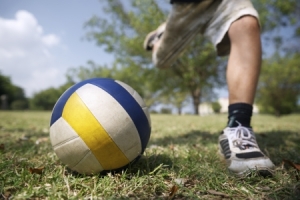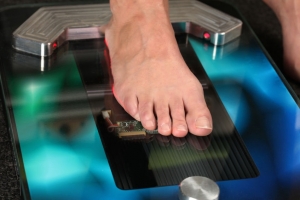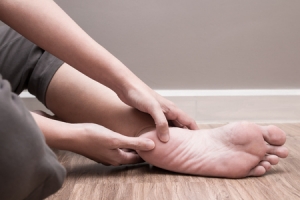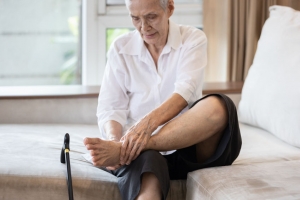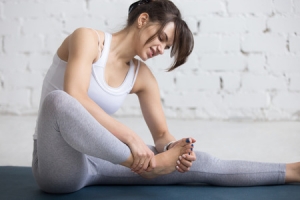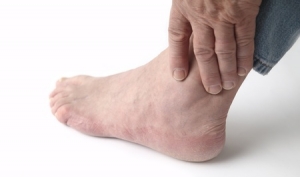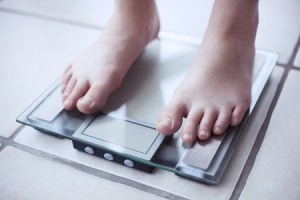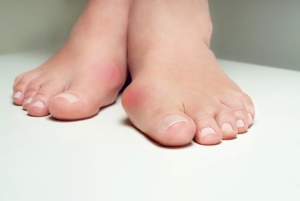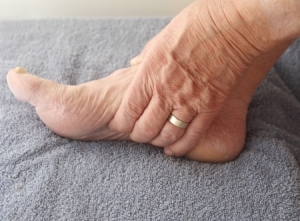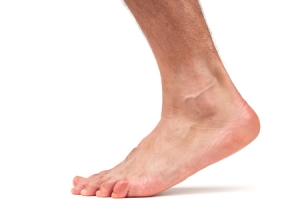Connect With Us
Blogs
Displaying items by tag: arthritis
Healthy Lifestyle Choices Improve Juvenile Arthritis Symptoms
At Superior Foot & Ankle Care Center we treat podiatric problems in Los Angeles County patients of all ages. In July, we recognize Juvenile Arthritis Awareness Month. Nearly 300,000 children and teenagers suffer from Juvenile Arthritis (JA). Some forms are similar to the types of arthritis that adults suffer from, and some are unique to young people.
Many types of JA are autoimmune or autoinflammatory in nature, meaning that the immune system mistakenly attacks healthy tissue with inflammatory chemicals. These can cause joint pain and inflammation, and skin disorders, and internal organ issues. If your child is experiencing joint pain in their feet or ankles, the first step is to make an appointment at our Long Beach office at (562) 420-9800 office so that our podiatrists, Dr. Victoria M. Foley and Dr. Constance Ornelas, can examine your child and determine if the discomfort is strictly podiatric or if arthritis or another disease may be the source. Once a diagnosis is determined, the foot doctor will advise you on treatment or refer you to a specialist in the area of concern. Just as with adults, healthy lifestyle choices can play a key role in managing JA and preventing its progression. Below are three to focus on:
Exercise—Although some types of movement may be painful for children and teens with joint disorders, regular exercise and physical activity is also one of the best weapons in the fight against arthritis. Depending on your child’s age, they may need help finding the activity that best suits their particular type of arthritis. Some good choices include swimming and aquatic classes (the buoyancy of the water naturally reduces pressure on the joints), biking and yoga. Expose your child to several different activities and as they mature, they will gravitate to those that best suit them.
Nutrition—Lower weight means less pressure on joints, especially those in the knees, ankles, and feet. Some foods are also known to decrease inflammation while others spark an inflammatory response. Make healthy eating a family habit and involve your children in choosing nutritious foods and then preparing and eating them together.
Mental Health—Growing up is hard enough without having a chronic disease. Make sure your child has a good support network, spends time with friends, and participates in activities that build confidence. Model positive coping skills for your child and seek professional help if necessary.
FAQ’s about Custom Orthotics
At Superior Foot & Ankle Care Center we often get questions from our Los Angeles County patients about custom orthotics. Below are some of the most frequently asked questions about this very effective, non-invasive type of podiatric treatment.
Q: What conditions can orthotics help treat?
A: Orthotics are footwear inserts that are used to provide support and reduce pain, discomfort, pressure or imbalance, and other symptoms caused by a wide range of foot and ankle deformities, injuries, and diseases as well as biomechanical problems. Some common conditions that can be treated with orthotics include flat feet, heel pain, arthritis, bunions, calluses, corns, big toe pain, and neuropathic ulcerations.
Q: What’s the difference between over-the-counter shoe inserts and custom orthotics?
A: Over-the-counter inserts can provide some arch support and treat minor discomfort and pain. Prescription orthotics, however, are made from a mold of your unique foot and therefore better able to address and correct your specific foot issues. Prescription orthotics are also constructed of more durable materials and can last a long time.
Q: What are some common kinds of prescription orthotics?
A: Orthotics come in many shapes and sizes and are made from a variety of materials depending on individual needs. They may take the form of insoles, arch supports, heel pads, or foot cushions. Generally, there are two classifications of orthotics. Accommodative orthotics offer cushioning and reduce pressure on a vulnerable area of the foot. Functional orthotics are used to treat foot problems caused by foot and ankle motion and alignment.
Q: How are custom orthotics made?
A: The first step is to have our podiatrists, Dr. Victoria M. Foley and Dr. Constance Ornelas, conduct a thorough examination of your feet and ankles and evaluate how they are impacting your knees, legs, and lower back. Once the foot doctor has a diagnosis of your podiatric disorder and a complete understanding of the biomechanics of your foot, a mold of your foot will be made from a plaster cast or a specialized computer scan that maps your foot structure and your gait. The podiatrist will then check to make sure the orthotic is fitted properly and monitor your progress.
If you would like to learn more about orthotics and whether or not they can help you, contact our Long Beach office at (562) 420-9800 office for an appointment today.
3 Causes of Back of Heel Pain
At Superior Foot & Ankle Care Center we know that pain at the back of your heel can be quite debilitating. What starts as an annoying ache can quickly turn into excruciating pain that makes walking difficult. For our Los Angeles County patients that may be experiencing these uncomfortable symptoms, here are three possible causes.
Haglund’s Deformity—this is a bony enlargement that forms at the back of your heel. This condition may be the result of an inherited structural issue like a high arch or a tight Achilles tendon. It can also be caused by wearing shoes with stiff backs that rub on the heel—hence this deformity’s other name: pump bump.
Bursitis—small sacs that are filled with fluid—known as bursas—are found throughout the body near joints and bones. They serve as protection from friction and provide a little extra lubrication. When a bursa becomes irritated due to repetitive motion or pressure it can become painfully inflamed. Haglund’s deformity is one cause of bursitis but it may also be the result of repetitive action from exercise or another medical condition such as gout, diabetes or arthritis.
Achilles Tendonitis—this long tendon that runs down the back of your lower leg connects your calf muscle to the heel bone. It can be aggravated or injured from overuse such as someone whose job involves climbing a ladder. Athletes and “weekend warriors” who suddenly increase the intensity of their workout routine may also suffer from Achilles issues.
The only way to find out for sure what’s causing your back of heel pain is to let our podiatrists, Dr. Victoria M. Foley and Dr. Constance Ornelas, examine your foot and conduct the necessary tests to get to the bottom of the problem. You can contact our Long Beach office at (562) 420-9800 office for an appointment. To learn more about foot health and conditions we treat check out our video library.
5 Foot Care Tips for Seniors
Did you know that the average person walks between 2.5 and 5 miles a day? At Superior Foot & Ankle Care Center we know that means our Los Angeles County senior patients have likely put quite a few miles on their feet. In honor of Older Americans Month 2021, we’d like to offer some tips for protecting podiatric health as you age.
- Listen to your feet. Foot pain, shoes that don’t seem to fit properly anymore, and fatigue in your legs or feet are all ways that your feet communicate that something isn’t right. Don’t put off seeking an evaluation of these symptoms. Contact our Long Beach office at (562) 420-9800 to schedule an appointment with our podiatrists, Victoria M. Foley and Dr. Constance Ornelas.
- Keep feet clean and dry. Wash daily with soap and water and dry thoroughly (paying particular attention to the spaces between your toes). If you tend to sweat excessively, keep an extra pair of socks with you and change when you notice your feet feel damp. This will go a long way in preventing fungal infections like athlete’s foot and toenail fungus.
- Check your feet daily. Look over your entire foot (or ask someone to do it for you) for any unusual changes. Toenail or skin discoloration, bumps, bruises and swelling may all indicate a developing foot or even systemic problem. Diseases such as diabetes, hypertension and arthritis often first manifest in the feet.
- Choose shoes wisely. Your footwear is one of the biggest predictors of podiatric health. Look for styles that have good arch support and heel and insole cushioning. Treads should be non-slip but not have rubber over the toes which can lead to tripping. Ask the podiatrist for recommendations of shoe styles if you have a deformity such as a bunion or hammertoe. Lastly, get your feet professionally measured to ensure a proper fit and always try on both shoes before purchasing.
- Reduce fall risk. Falls are the number one cause of both fatal and non-fatal injuries in seniors. Safeguard your home by installing additional stair rails and lighting. Remove throw rugs, plant stands, electrical cords that are across walking areas, and other clutter to lower your chances of falling.
Your podiatrist is your partner in making sure your feet continue to be healthy and enable you to keep on living the active life you love. If you have any questions or concerns, don’t hesitate to contact us.
Dealing with Chronic Ankle Pain
You haven’t sprained your ankle—at least not recently—but it hurts and is stiff and swollen at times. This is a complaint we at Superior Foot & Ankle Care Center sometimes hear from our Los Angeles county patients. When an ankle sprain occurs, our podiatrists, Dr. Victoria M. Foley and Dr. Constance Ornelas always stress the importance of prompt and complete rehabilitation. Many chronic ankle issues stem from a previous injury. Below are two types of chronic ankle trouble and what to do about them.
Chronic Lateral Ankle Pain
The characteristic symptom of chronic lateral ankle pain is pain along the outside of the ankle. You may also experience discomfort in your leg along with stiffness, swelling, and tenderness in the ankle. Many patients also report that their ankle feels like it is unstable or going to “give way” especially when walking on surfaces that are not level or when wearing heels. Although the most common cause of chronic lateral pain is a past sprain or injury, there are other possible sources, including:
- Fractures in the ankle joint bones
- Arthritis or inflammation in the joint, joint lining or tendons
- Nerve damage
- Scar tissue
Treatment Options: The treatment for chronic lateral ankle pain will depend on the source. If the podiatrist finds a break in a bone, it may be necessary to immobilize the ankle to allow the bone to heal. Other possible treatments include:
- Anti-inflammatory medications or a prescription steroid
- Physical therapy
- Ankle brace or another type of support
Osteochondritis
The symptoms of osteochondritis often mimic those of an ankle sprain: pain, stiffness, and swelling in the ankle joint. You may also find it difficult to bear weight on the ankle. This condition can affect people at any age and is almost always due to a previous sprain that may have caused lesions or a stress fracture on the surface of the joint.
Treatment Options: The foot doctor will first want to x-ray the ankle that’s bothering you to check for fractures or other injuries. This can be done right in our Long Beach office. At a minimum, the ankle will likely have to be immobilized to rest the joint and allow it to heal. In severe cases, surgery may be necessary to remove bone fragments or cartilage, stimulate new blood vessels, and promote scar tissue.
If you are experiencing ongoing ankle pain or stiffness, contact our Long Beach office at (562) 420-9800 to schedule an appointment.
What’s Behind Swollen Feet and Ankles?
At Superior Foot & Ankle Care Center, we know that swelling of the feet and ankles is a fairly common occurrence. It can simply be the result of a long day spent sitting or standing without enough breaks to move around. Sometimes, however, swelling (also known as edema) can be the result of another issue going on in your body. For this reason, it’s important not to ignore swelling that lasts for more than a day or is an ongoing symptom. Contact our Long Beach office by calling: (562) 420-9800 to make an appointment with one of our podiatrists, Dr. Victoria M. Foley or Dr. Constance Ornelas to have your feet and ankles examined and find the source of the swelling.
Below are some common causes of edema:
Pregnancy—the fluids in your body greatly increase when you are pregnant. That fact, combined with the extra weight, it is normal to gain during pregnancy increase the likelihood of extra fluid pooling in the feet and ankles. Putting your feet up regularly is one of the best ways to prevent edema from causing discomfort.
Arthritis—when your joints become inflamed, it is not unusual for swelling to occur. You may notice pain and stiffness in the joints as well if arthritis is behind your edema.
Vein Problems—venous insufficiency can occur over time and is more common in patients over the age of 50. As the valves in veins get stretched out, they can begin to leak when the blood flows back to your heart. Thanks to gravity, the leaked blood will pool in the lower extremities. Another more serious vein issue that can have swelling as a symptom is a blood clot. If the swelling seems to be moving up your leg or the area is warm, you experience shortness of breath, or feel lightheaded, you should seek medical attention immediately.
Medical Conditions and Medications—edema can be a sign of an infection in a joint in your leg, ankle, or foot. It can also be a sign of lymphedema (a blockage in the lymphatic system that causes fluid to pool in the lower extremities), a heart, liver, or kidney problem. Anti-inflammatory medications (both prescription and over the counter), certain antidepressants, blood pressure medications, and hormones can all have edema as a side-effect.
Don’t delay in getting even mundane foot and ankle symptoms checked promptly. Contact us if you have any questions regarding the condition of your feet in Long Beach Douglas Park CA.
Losing Weight: Your Feet Will Thank You
It’s a sad fact that 74% of overweight Americans have foot problems. So, while you may wonder what the connection is, at Superior Foot & Ankle Care Center, we know there is a direct correlation between being overweight or obese and the health of your feet. It’s easy to see when you stop and think about it: your feet are carrying the weight of your entire body—the more you weigh the more stress and hard work for your feet. Below are three benefits for your feet to losing weight:
- Less foot pain—excess weight puts strain on your tendons and joints and can cause a flattening of the arch of your foot. This can increase your risk or the severity of several foot conditions, including:
- Plantar fasciitis
- Tendonitis
- Arthritis
- Sesamoiditis
- Gout
Changes and discomfort in your feet can also lead to problems with your back, hips and knees. If you are experiencing pain in any part of your foot, it’s essential that you make an appointment at our Long Beach office by calling: (562) 420-9800 so that our podiatrists, Dr. Victoria M. Foley or Dr. Constance Ornelas can examine your feet and determine the source of your foot problem.
- Prevention of diseases—maintaining a healthy weight can also help lower your risk of certain medical conditions such as diabetes, hypertension and peripheral arterial disease. These systemic diseases can have devastating affects on your feet like neuropathy and circulation problems.
- Greater mobility—the less you weigh, the easier it is to be active. Being active can help in losing and maintaining a proper weight. A regular exercise routine will also help keep foot joints flexible and preserve a full range of motion.
The good news is that it doesn’t require a huge drop in weight to see big results for your feet. For example, for every pound you lose, this reduces the pressure on your knees by up to four pounds. If you are concerned that your weight may be affecting the condition of your feet, contact us today for more information.
What’s Behind Bunions?
At first, a bunion may appear very subtle. You may look down and notice your big toe seems to be leaning slightly toward the second toe. At Superior Foot & Ankle Care Center, we find many patients are unfamiliar with how bunions develop and therefore may not come in promptly to get them evaluated.
Know Your Risk Factors
Most often, bunions are caused by a biomechanical defect in your feet. This may be a neuromuscular problem, flat feet or overpronation. In many instances, this fault in the mechanics of your feet may be inherited. There are other factors, however, that can also increase your risk of developing a bunion, including:
- Wearing tight-fitting shoes with pointy or narrow toe boxes
- Spending long periods of time in high-heeled shoes or boots
- A previous foot injury
- Congenital defect
- Repetitive stress to the foot
- Arthritis
Seek Treatment Early
In its early stages, a bunion may not cause you any pain or discomfort. However, bunions are a progressive disorder. As time goes on, the big toe joint will move further and further out of place until it begins to cause pain when you walk. It will also become increasingly difficult to wear shoes due to the pressure exerted on the bunion by your footwear. The toe can eventually become rigid in the defective position and cause other deformities such as hammertoes to occur. It’s essential that you make an appointment at our Long Beach office so that our podiatrists, Dr. Victoria M. Foley or Dr. Constance Ornelas can examine your foot. Fortunately, there are many treatment options available which can slow the progression of the bunion and prevent foot pain and discomfort. These include:
- Altering your activities to avoid motion that exerts adverse pressure on the bunion
- Using a custom orthotic to correct the biomechanical problem and increase stability
- Exercises to increase joint mobility
- Night splints to realign the joint
If you think you have a bunion forming, don’t wait. Contact us today for an appointment by calling: (562) 420-9800.
Recognizing and Treating Rheumatoid Arthritis
As we age, many of us just accept joint stiffness and pain as an unavoidable part of getting older. But, at Superior Foot & Ankle Care Center, we want to encourage patients to bring those symptoms to our Long Beach office as soon as they start to notice them. Arthritis can be treated, and its progression can be slowed. It’s also important to have our podiatrists, Dr. Victoria M. Foley or Dr. Constance Ornelas examine your feet and properly diagnose your condition because there are multiple kinds of arthritis and they require different treatments.
Signs of Rheumatoid Arthritis
Arthritis is actually a category that contains over 100 different conditions. The two major forms of arthritis, however, are osteoarthritis (the “wear and tear” kind) and rheumatoid arthritis. Rheumatoid arthritis is the most serious of the two. It is actually an autoimmune disorder that causes the body’s immune system to attack its own cells. This leads to an intense inflammatory response within the body. Symptoms may include:
- Joint pain
- Stiffness
- Redness and warmth at the joints
- Swelling
These are also common signs of osteoarthritis. Patients with rheumatoid arthritis may notice additional symptoms, including:
- Fever
- Fatigue
- Symmetry of symptoms—meaning that what is going on in one side of the body is also going on in the other side, i.e., joint pain will occur in both hands or both feet
- Weight loss
- Nerve damage that results in numbness or tingling
- Decreased range of motion
Because rheumatoid arthritis is a systemic condition that can also affect other symptoms in the body, a patient with this disease will need a rheumatologist or other physician to coordinate and mange their care.
Podiatric Help
The foot doctor is part of the care team for a patient with rheumatoid arthritis will help with treatment designed to relieve foot pain caused by the arthritis. Some options may include:
- Steroid injections
- Accommodative shoes
- Orthotics
If you have begun to experience joint discomfort, soreness or pain, it’s important that you make an appointment as soon as possible. Contact us by calling: (562) 420-9800.
Fixing Flat Feet
At Superior Foot & Ankle Care Center we treat many patients with flat feet. This common condition can be a source of ongoing pain and also cause swelling and a lack of flexibility in the foot. Oftentimes, people with flat feet also suffer from heel pain due to the biomechanical dysfunction that alters the structure and motion of the foot.
In some people, flattening of the arch begins during adolescence and continues into adulthood. For others, it is caused by Posterior Tibial Tendon Dysfunction or PTTD—a condition that has to do with changes in this tendon that provides major support for the arch of your foot. Other contributing factors to flat feet include:
- Genetics
- Weight gain
- Injury or trauma
- Aging
- Arthritis
Getting Relief
Our podiatrists, Dr. Victoria M. Foley or Dr. Constance Ornelas will want to examine your feet and determine the source of the your deformity. If your fallen arches are not causing you pain, the foot doctor may just take a wait and see approach and monitor your condition. Flat feet is usually a progressive disorder and therefore is best treated sooner rather than later. Regardless of the cause, however, there are several non-invasive treatment options available. These include:
- Icing the painful area
- Anti-inflammatory medications
- Physical therapy
- Arch supports, braces or supportive tape
- Custom orthotics
- Rest
- Choosing more supportive shoes
When these measures fail to bring relief or the arch continues to fall, surgery may become necessary. We offer flat foot reconstruction surgery that can provide a long-term correction of your fallen arches. If you are suffering with painful flat feet, contact our Long Beach office as soon as possible by calling: (562) 420-9800. The podiatrist will discuss the best surgical option for your specific case of flat feet and let you know what you can expect as far as results and recovery time.
